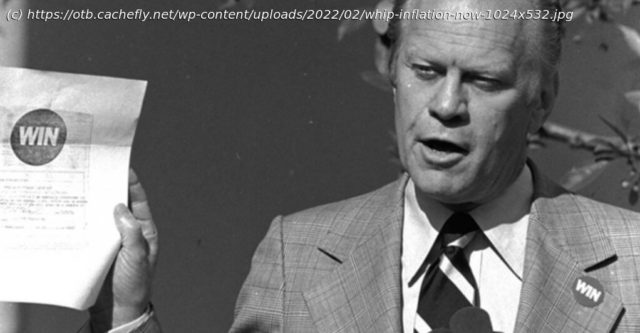Can the Misery Index be far behind?
Those of us who are old enough to remember inflation being a central issue in American politics are, well, pretty old. It has been pretty much a non-factor for the last several presidential administrations, kept under control through aggressive anti-inflation policies managed by the Federal Reserve. The combination of a massive set of shocks set off by the COVID pandemic and unprecedented federal spending in response has changed that. WSJ (“ U.S. Inflation Accelerates to 7.5%, a 40-Year High “): U.S. inflation accelerated to a 7.5% annual rate in January, reaching a four-decade high as strong consumer demand and pandemic-related supply constraints kept pushing up prices. The Labor Department on Thursday said the consumer-price index— which measures what consumers pay for goods and services —was last month at its highest level since February 1982, when compared with January a year ago, and higher than December’s 7% annual rate. Inflation has been above 5% for the past eight months as a U.S. rebound from earlier in the Covid-19 pandemic created imbalances in the economy. The so-called core price index, which excludes the often-volatile categories of food and energy, climbed 6% in January from a year earlier. That was a sharper rise than December’s 5.5% increase, and the highest rate in nearly 40 years. On a monthly basis, the CPI increased a seasonally adjusted 0.6% last month, holding steady at the same pace as in December. rices were up sharply for a number of everyday household items, including food, vehicles, shelter and electricity. A sharp uptick in housing rental prices—one of the biggest monthly costs for households—contributed to last month’s increase. Used-car prices continued to drive overall inflation, rising 40.5% in January from a year ago. However, prices for used cars moderated on a month-to-month basis, increasing by 1.5%. That was down from a 3.3% increase in December and the smallest gain since September—a possible sign that a major source of inflationary pressure over the past year could be easing. Food prices surged 7%, the sharpest rise since 1981. Restaurant prices rose by the most since the early 1980s, pushed up by an 8% jump in fast-food prices from a year earlier. Grocery prices increased 7.4%, as meat and egg prices continued to climb at double-digit rates. Energy prices rose 27%, easing from November’s peak of 33.3%. But the jump in electricity costs was particularly sharp when compared with historical trends, with prices up 10.7% from a year ago and 4.2% from December. The latter was the sharpest one-month rise since 2006. WaPo (“ Prices climbed 7.5% in January compared with last year, continuing inflation’s fastest pace in 40 years “): Prices continued their upward march in January, rising by 7.5 percent compared with the same period a year ago, the fastest pace in 40 years. Inflation was expected to climb relative to last January, when the economy reeled from a winter coronavirus surge with no widespread vaccines. Today’s new high inflation rate reflects all the accumulated price gains, in gasoline and other categories, built up in a tumultuous 2021. In the shorter term, data released Thursday by the Bureau of Labor Statistics also showed prices rose 0.






